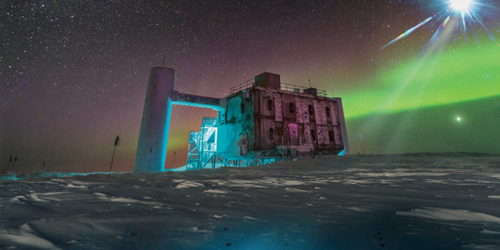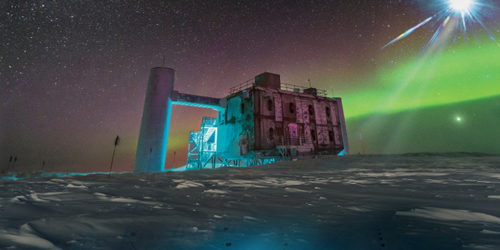Neutrino Probes of Long-Range Interactions
Searches for new fundamental interactions tend to concentrate on subatomic scales. Some theories, however, predict new interactions that—like gravity—can involve large numbers of particles acting over astronomical distances. A study by Mauricio Bustamante of the Niels Bohr Institute in Denmark and Sanjib Kumar Agarwalla of the Institute of Physics in Bhubaneswar, India, analyzes data from the IceCube Neutrino Observatory at the South Pole. The researchers looked for changes in neutrino oscillation behavior caused by long-range interactions with, for example, the electrons in the Sun or the electrons distributed throughout our Galaxy. The researchers find no such signatures, which allows them to place new constraints on these types of interactions.
Certain theories beyond the standard model predict long-range interaction between neutrinos and electrons mediated by a hypothetical particle called the Z´ vector boson. This proposed interaction is expected to be weak, but a large population of electrons within the interaction range could exert a collective Z´ force that affects neutrino oscillations. Previous studies failed to find evidence of such an effect in solar, reactor, and atmospheric neutrino data, placing limits on the strength of the Z´ interaction over solar system scales.
Agarwalla and Bustamante investigated Z´ interactions using the highest-energy neutrinos observed by IceCube. These neutrinos are extragalactic in origin, which means they are sensitive to the collective effect of electrons in the Milky Way and beyond. Bustamante and Agarwalla modeled the cumulative influence from these electrons and determined how strong the Z´ interaction could be without contradicting the IceCube data. From this analysis, they were able to place the first upper limits on the Z´ interaction strength over Galactic and extragalactic scales.
This research is published in Physical Review Letters.
–Michael Schirber
Michael Schirber is a Corresponding Editor for Physics based in Lyon, France.





